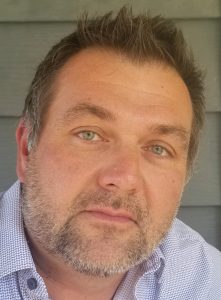Student Spotlight – Christopher Richards Jr.
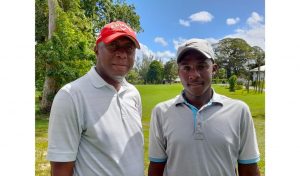 The name Christopher Richards is well known to competitors at the annual United States Golf Teachers Cup, but his son Christopher Richards Jr. is also making a name for himself. The younger Richards is the reigning champion of the Trinidad and Tobago Open, with one media outlet proclaiming he has replaced his dad as king of T&T golf. In addition, in 2021 as a 16-year-old, Richards won the Pointe-a-Pierre Junior Tournament. He recently represented Trinidad and Tobago in the Hoerman Cup as part of the Caribbean Amateur Golf Championship. He has also shot as low as 65 in official competition.
It’s not often a son lives up to a successful father’s accomplishments, but Richards Jr. might be the exception. And truth be told, the old man would be more than proud if his accomplishments were surpassed.
The name Christopher Richards is well known to competitors at the annual United States Golf Teachers Cup, but his son Christopher Richards Jr. is also making a name for himself. The younger Richards is the reigning champion of the Trinidad and Tobago Open, with one media outlet proclaiming he has replaced his dad as king of T&T golf. In addition, in 2021 as a 16-year-old, Richards won the Pointe-a-Pierre Junior Tournament. He recently represented Trinidad and Tobago in the Hoerman Cup as part of the Caribbean Amateur Golf Championship. He has also shot as low as 65 in official competition.
It’s not often a son lives up to a successful father’s accomplishments, but Richards Jr. might be the exception. And truth be told, the old man would be more than proud if his accomplishments were surpassed.


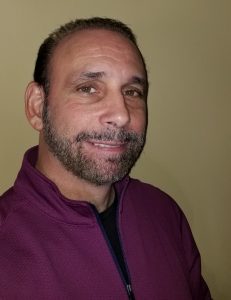 Since the unexpected loss of my only child Stephanie Jude in 2008 at age 18 while living in Boca Raton, Florida, and New Jersey, my focus in life became more challenging and less as a competitive player as I all but walked away from this great game. Since then, I have geared a continued journey towards making a positive mark as I strive to grow this game teaching players of all levels from tour pros to club champions, to aspiring collegiate athletes, to men and women, to disabled children and beginning amateurs alike.
I feel gifted to be able to play both righty and lefty, which affords me easier teaching assimilation to each unique player skillset. Working as the head pro from several facilities, I can reach more students and assist them in this journey throughout life, to teach them to swing effectively and efficiently while learning to respect this sport and play at their highest possible level. With a diverse background, I can easily translate the swing, making it simplified for players to learn how to shave strokes off their game playing at their highest level, pro and amateur, or help beginners break 100. I teach the rules, the history of the game and what makes each of us unique, using my sports psychology background. It brings me great pleasure seeing students able to create a positive mindset, efficient swing and tour-player mentality, even if it’s just for recreational use. This attitude breeds respect of self and the game. I strive to ensure each student is properly fitted with correct equipment and respect of opponents alike, and to teach all how to win with dignity and lose with great humility.
My mantra is we all make mistakes, but never make the same mistake twice. I use my unique background in sports, law, computer science, and fitness and nutrition to help others play their best.
By: Steven Pezzino, USGTF Member
Since the unexpected loss of my only child Stephanie Jude in 2008 at age 18 while living in Boca Raton, Florida, and New Jersey, my focus in life became more challenging and less as a competitive player as I all but walked away from this great game. Since then, I have geared a continued journey towards making a positive mark as I strive to grow this game teaching players of all levels from tour pros to club champions, to aspiring collegiate athletes, to men and women, to disabled children and beginning amateurs alike.
I feel gifted to be able to play both righty and lefty, which affords me easier teaching assimilation to each unique player skillset. Working as the head pro from several facilities, I can reach more students and assist them in this journey throughout life, to teach them to swing effectively and efficiently while learning to respect this sport and play at their highest possible level. With a diverse background, I can easily translate the swing, making it simplified for players to learn how to shave strokes off their game playing at their highest level, pro and amateur, or help beginners break 100. I teach the rules, the history of the game and what makes each of us unique, using my sports psychology background. It brings me great pleasure seeing students able to create a positive mindset, efficient swing and tour-player mentality, even if it’s just for recreational use. This attitude breeds respect of self and the game. I strive to ensure each student is properly fitted with correct equipment and respect of opponents alike, and to teach all how to win with dignity and lose with great humility.
My mantra is we all make mistakes, but never make the same mistake twice. I use my unique background in sports, law, computer science, and fitness and nutrition to help others play their best.
By: Steven Pezzino, USGTF Member

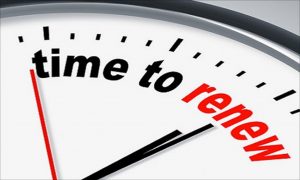 Members who have not paid their dues for 2022 are now past due and a $25 late fee will be applied, which will increase to $50 on March 1. USGTF members who wish to remain in good standing and enjoy the benefits of membership, especially the right to identify oneself as a USGTF member and use the logo, are reminded of this most important professional obligation. In addition, being able to take advantage of the Member Search feature, job opportunities postings and more are available with keeping your membership current. Renew online at
Members who have not paid their dues for 2022 are now past due and a $25 late fee will be applied, which will increase to $50 on March 1. USGTF members who wish to remain in good standing and enjoy the benefits of membership, especially the right to identify oneself as a USGTF member and use the logo, are reminded of this most important professional obligation. In addition, being able to take advantage of the Member Search feature, job opportunities postings and more are available with keeping your membership current. Renew online at 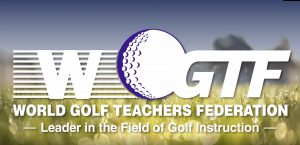 When the World Golf Teachers Federation was founded in 1993 with a collaboration between the United States and Europe, the goal was to form a worldwide body of golf teachers to better serve the profession. Twenty-nine years later that mission has been accomplished. Today there are over 40 member nations in the WGTF, with individual members in 85 countries, and the organization is as strong as ever. The World Golf Teachers Cup is the largest international competitive event for golf teaching professionals, first played in 1997.
Individual members of the WGTF can also be found on the Member Search function on the site. Searches can be done by either first or last name. Please visit
When the World Golf Teachers Federation was founded in 1993 with a collaboration between the United States and Europe, the goal was to form a worldwide body of golf teachers to better serve the profession. Twenty-nine years later that mission has been accomplished. Today there are over 40 member nations in the WGTF, with individual members in 85 countries, and the organization is as strong as ever. The World Golf Teachers Cup is the largest international competitive event for golf teaching professionals, first played in 1997.
Individual members of the WGTF can also be found on the Member Search function on the site. Searches can be done by either first or last name. Please visit  By USGTF Technical Committee
We teach golf for the love of the game, but we also earn an income from it, either full-time or part-time. Maximizing our lesson income for 2022 can be done with some relatively easy steps:
– Have a strong online presence. Any business worth its salt will have a strong online presence in 2022, including a functional website and social media accounts that are maintained.
– Advertise. Signage and brochures should be prominent at your teaching facility, and business cards should be readily available. Television advertising in some markets is surprisingly affordable, as are radio ads.
– Make yourself available. Be present at your facility. Give talks to groups. Try to get interviewed on local television or radio, and by your local newspaper golf writer (if he or she still exists!).
– Ask for referrals. Don’t be shy in asking your students to spread the word around about you.
– Be creative in your lesson offerings. Giving 30- or 60-minute individual lessons are great, but you can make more per hour with group lessons. Offer playing lessons and clinics and lesson memberships..
– Conduct junior camps. As one USGTF professional stated, this is “found money.” A typical cost to the parents might be $150 for a 4-day camp. Multiply that by 10 kids and that’s $1,500, minus whatever the course takes and if you hire someone to help you.
– Raise your rates. In case you haven’t noticed, the price of everything has gone up heading into 2022, and businesses have raised wages. Don’t be afraid of raising rates accordingly.
By USGTF Technical Committee
We teach golf for the love of the game, but we also earn an income from it, either full-time or part-time. Maximizing our lesson income for 2022 can be done with some relatively easy steps:
– Have a strong online presence. Any business worth its salt will have a strong online presence in 2022, including a functional website and social media accounts that are maintained.
– Advertise. Signage and brochures should be prominent at your teaching facility, and business cards should be readily available. Television advertising in some markets is surprisingly affordable, as are radio ads.
– Make yourself available. Be present at your facility. Give talks to groups. Try to get interviewed on local television or radio, and by your local newspaper golf writer (if he or she still exists!).
– Ask for referrals. Don’t be shy in asking your students to spread the word around about you.
– Be creative in your lesson offerings. Giving 30- or 60-minute individual lessons are great, but you can make more per hour with group lessons. Offer playing lessons and clinics and lesson memberships..
– Conduct junior camps. As one USGTF professional stated, this is “found money.” A typical cost to the parents might be $150 for a 4-day camp. Multiply that by 10 kids and that’s $1,500, minus whatever the course takes and if you hire someone to help you.
– Raise your rates. In case you haven’t noticed, the price of everything has gone up heading into 2022, and businesses have raised wages. Don’t be afraid of raising rates accordingly.
 Professional golf continues to roll along at a healthy pace, with increased purses and television viewership. And with information showing that outdoor transmission of Covid is extremely low, as witness by full crowds at football games this past fall with little-to-no infection spread as a result, golf tournaments almost assuredly will welcome fans back at full capacity. The men’s majors season kicks off at The Masters in April, as always. The women’s major championship season begins with the Chevron Championship at Mission Hills in Palm Springs, California. The tournament that started out as the Colgate Dinah Shore in the early 1970s is moving to Texas next year in a controversial move that some equate to moving The Masters from Augusta National. In any event, major championships tend to produce the best and most exciting golf every year, and look for the same in 2022.
Professional golf continues to roll along at a healthy pace, with increased purses and television viewership. And with information showing that outdoor transmission of Covid is extremely low, as witness by full crowds at football games this past fall with little-to-no infection spread as a result, golf tournaments almost assuredly will welcome fans back at full capacity. The men’s majors season kicks off at The Masters in April, as always. The women’s major championship season begins with the Chevron Championship at Mission Hills in Palm Springs, California. The tournament that started out as the Colgate Dinah Shore in the early 1970s is moving to Texas next year in a controversial move that some equate to moving The Masters from Augusta National. In any event, major championships tend to produce the best and most exciting golf every year, and look for the same in 2022. 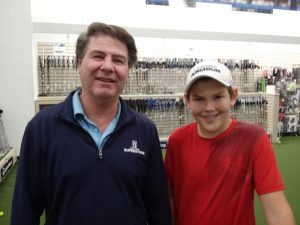 By Mark Harman, USGTF Professional
In the spring of 2019, a 7-year-old boy came to my teaching studio for his first lesson. Paul Morrell’s swing was extremely raw, to say the least, and so we began on the fundamentals. I taught him how to make a proper pivot instead of a huge sway on the backswing, and had him swing into a good finish. It took a while, but by the next year his swing was much better and he started hitting the ball well.
In 2020, Paul started playing on the local U.S. Kids Golf Tour in and around Savannah, Georgia. After a couple of close calls, he finally won the last event of the season. And in 2021, as the number one player in his age group locally, he qualified for the world championships in PInehurst, North Carolina. Although he did not do as well as he would have liked, he earned valuable experience. He also entered the local Drive, Pitch & Putt Championship, and if not for one errant drive, would have been one of the qualifiers for the next stage.
Paul just turned 10, is a big kid for his age, and is now hitting the ball around 200 yards off the tee when he gets a hold of one. His swing is technically very good and he hits a reliable fade. His swing is not “perfect” if you compare it to a theoretical model, but it is extremely functional and repeatable, and we will continue to slowly refine it. His favorite player is Jordan Spieth, and he wears the same Under Armour clothing that Spieth does. He also mimicks Spieth to the point he uses the same ball and putter and incorporated Spieth’s famous chicken wing, but I think we finally got him out of that. In any case, Paul is a good kid who plays other sports, so predicting future golf success is folly. As long as he enjoys the game in whatever capacity he chooses, that’s all I can ask.
By Mark Harman, USGTF Professional
In the spring of 2019, a 7-year-old boy came to my teaching studio for his first lesson. Paul Morrell’s swing was extremely raw, to say the least, and so we began on the fundamentals. I taught him how to make a proper pivot instead of a huge sway on the backswing, and had him swing into a good finish. It took a while, but by the next year his swing was much better and he started hitting the ball well.
In 2020, Paul started playing on the local U.S. Kids Golf Tour in and around Savannah, Georgia. After a couple of close calls, he finally won the last event of the season. And in 2021, as the number one player in his age group locally, he qualified for the world championships in PInehurst, North Carolina. Although he did not do as well as he would have liked, he earned valuable experience. He also entered the local Drive, Pitch & Putt Championship, and if not for one errant drive, would have been one of the qualifiers for the next stage.
Paul just turned 10, is a big kid for his age, and is now hitting the ball around 200 yards off the tee when he gets a hold of one. His swing is technically very good and he hits a reliable fade. His swing is not “perfect” if you compare it to a theoretical model, but it is extremely functional and repeatable, and we will continue to slowly refine it. His favorite player is Jordan Spieth, and he wears the same Under Armour clothing that Spieth does. He also mimicks Spieth to the point he uses the same ball and putter and incorporated Spieth’s famous chicken wing, but I think we finally got him out of that. In any case, Paul is a good kid who plays other sports, so predicting future golf success is folly. As long as he enjoys the game in whatever capacity he chooses, that’s all I can ask.
